The 7 Best National Forests That Need to Be on Your Bucket List
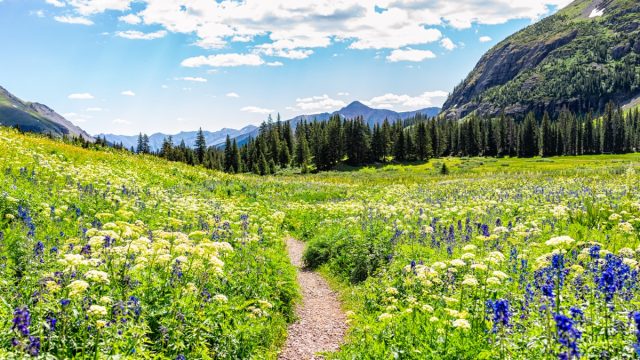
You’ve heard of U.S. national parks and national monuments, but what you might be less familiar with are U.S. national forests. These hidden gems are home to some of the most spectacular views in the country, all overseen by the U.S. Department of Agriculture (USDA) Forest Service. Unlike national parks, national forests are established not only to manage natural resources, but also to “sustain the health, diversity, and productivity of the Nation’s forests and grasslands to meet the need of present and future generations,” per the Forest Service’s mission statement.
There are a total of 155 national forests that cover 193 million acres in the U.S., all of which you can enjoy (often for free). If you’re having trouble deciding which national forest you should explore first, travel experts are here to make your life a bit easier. Read on to find out which seven national forests they say should be on everyone’s bucket list.
READ THIS NEXT: The 6 Best U.S. National Parks to See Fall Foliage.
1
Shasta-Trinity National Forest, California
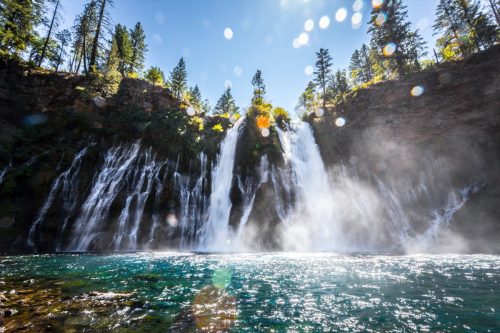
Planning a trip to California? Head north to Shasta-Trinity National Forest, which Sophie Clapton, travel blogger for We Dream of Travel, believes doesn’t receive as much recognition as it should.
“For now, Shasta-Trinity National Forest remains one of the most overlooked destinations for explorers and nature lovers,” Clapton tells Best Life. “This is a region of diverse and photogenic natural beauty that rivals any national park or monument in the country.”
There’s much to be seen at this national forest, but Mt. Shasta is not to be missed. This volcano has twin peaks—and it has already blown one of its tops, Clapton says.
“This majestic monolith stands high above a picturesque forest with alpine lakes, roaring waterfalls, cinder cones, hot springs, and a host of volcanic features that beckon hikers and explorers to discover the countless natural marvels that hide throughout,” she explains.
2
Mt. Hood National Forest, Oregon
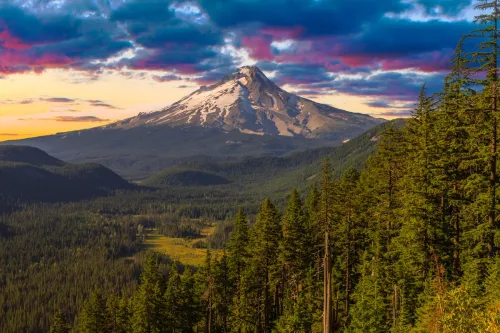
If you’re reading this list, you probably have some semblance of interest in the great outdoors. But if you want to see one of the most “iconic natural features” in Oregon, you need to check out Mt. Hood National Forest, Adam Marland, travel photographer and writer for We Dream of Travel, says.
According to Marland, Mt. Hood National Forest is the “crown jewel” of the state—having been named one of the Seven Wonders of Oregon—and there’s no shortage of things to do here.
“Mt. Hood National Forest protects an unspoiled expanse of Pacific Northwest [PNW] wilderness that includes endless lakes, rivers, streams, hiking trails, and outback camping,” Marland says. “This area is a favorite getaway for the myriad of outdoor-loving Portlandians who jump at any excuse to get lost on a trail, as well as casual tourists who want to experience the particular beauty of the PNW.”
Marland also recommends driving along the famous “Fruit Loop,” where you can check out “dozens of vineyards, fruit farms, cideries, and vendors.”
For more travel advice delivered straight to your inbox, sign up for our daily newsletter.
3
Tongass National Forest, Alaska

Are you up for a trip to Alaska? If so, take a journey to Tongass National Forest, which Denisha Rawlings, travel planner and blogger of Sojourn Alaska, says “should be on everyone’s bucket list.”
Tongass is the largest national forest in the U.S., Rawlings explains, and according to the Forest Service, it spans an impressive 17 million acres on the southeastern panhandle of Alaska. Rawlings adds that you can access this forest by cruise ship, but you should also take some time to stay in “one of the less visited communities” nearby.
There’s a unique range of opportunities at Tongass National Forest, Rawlings says. “Hiking on a glacier, dog sledding, wildlife watching, hiking, and fishing are just a few of the activities available.”
4
Flathead National Forest, Montana
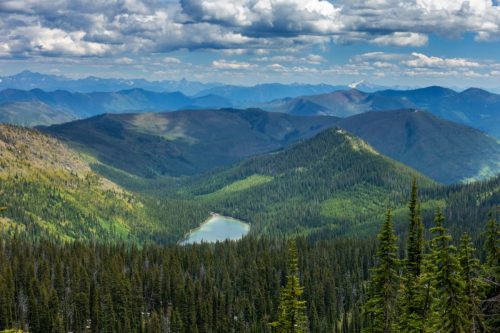
The Rocky Mountains are also home to a bucket list-worthy national forest. Flathead is situated south of Glacier National Park, Gabi Robledo, co-founder of the travel blog Nomads With A Purpose, explains. Thanks to their proximity, you can probably hit both in one trip—but if you only have time for one, you should consider opting for Flathead.
“Though it’s only a few miles from one of America’s most popular national parks, chances are you’ll find vast solitude and equal beauty while exploring Flathead National Forest,” Robledo tells Best Life. “This underrated area is full of beautiful forests, amazing glaciers, delicious huckleberries (in the summertime), and surreal mountain peaks.”
According to the forest’s website, it offers over 2,000 miles of trails, and if you plan a visit in the winter, you can also pack your skis for an unforgettable experience in the American West. Amid the “rugged wilderness,” there are a few key stops you won’t want to skip.
“Don’t miss the trail out to Strawberry Lake for beautiful views of the Flathead Valley, plus a pretty lake to relax at,” Robledo says, adding that more advanced hikers can also have an “unforgettable journey” on the Mount Aeneas trail.
READ THIS NEXT: The 5 Newest National Parks You Need to Add to Your Bucket List.
5
San Juan National Forest, Colorado
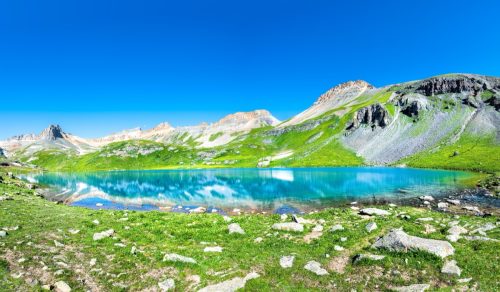
Another beauty in the western wilderness is San Juan National Forest. In the corner of Colorado, you can explore everything from “high-desert mesas” and “alpine peaks” spread out over 1.8 million acres, the forest’s website explains.
According to professional nature photographer Jeremy Janus, visitors will want to check out the Ice Lakes Basin, which is home to Ice Lake and Island Lake.
“These are heavily trafficked lakes, but this is one of the most beautiful areas in Colorado in my opinion,” Janus tells Best Life. “Ice Lake contains more of a powder blue sheen that is translucent and changes based on the lights and shadows throughout the day. Island Lake has more of a turquoise/Tiffany Blue hue to it.”
Even though the lakes are near each other they “feel completely different,” Janus says, adding that you can also check out the floral scenery during the warmer months.
“The area is filled with wildflowers in the summer and also offers amazing camping,” he adds. “To me, this is a quintessential Colorado hike that should be experienced by people traveling to the southern Colorado area.”
6
El Yunque National Forest, Puerto Rico
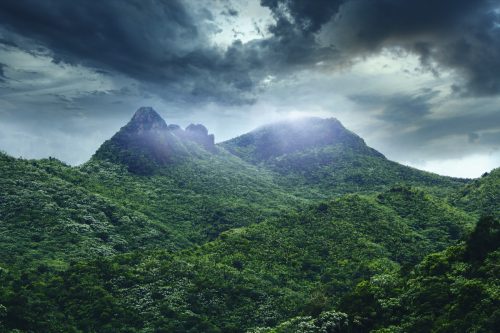
The sole tropical rainforest in the U.S. national forest system is El Yunque in Puerto Rico, which is what truly makes it a “must-visit,” Taima Ramsey, travel expert and founder of Poor In A Private Plane, says.
“Visitors to El Yunque can hike any of the 13 trails which take you through rivers and waterfalls that you can swim in,” Ramsey tells Best Life.
El Yunque is one of the smallest national forests, at 29,000 acres, according to its website, but what it lacks in size, it makes up for in biological diversity. El Yunque is home to a multitude of mammals, various reptiles, amphibians, aquatic species, and 97 species of birds.
“In addition to hiking, El Yunque is home to hundreds of different specifies of plants and animals—it’s definitely a must visit for anyone that is looking for a unique experience,” Ramsey says.
READ THIS NEXT: 8 State Parks That Are Even Better Than National Parks, Experts Say.
7
Fishlake National Forest, Utah
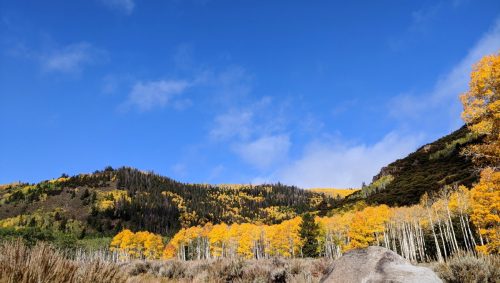
Dubbed the “Family Friendly” national forest, Fishlake is a great option for those who want to take on motorized trails or watch wildlife in action. The forest gets its name from Fish Lake, which offers ice fishing in the winter and is yet another site that is considered “the gem” of its state, this time being Utah.
But according to Brittany Haglund of the family travel blog The Minivan Bucket List, there is something special that makes this forest stand out.
“What makes it bucket list-worthy is that it’s home to the world’s largest living organism!” Haglund tells Best Life. “Known as Pando, it’s a grove of aspen trees (technically a colony of ‘clones’) that is spread over 100 acres, consists of over 40,000 individual trees, and weighs an estimated 13 million pounds.”
Haglund recommends a trip in the fall, as the leaves turn yellow and make for an “especially spectacular view.” If you’re looking to double-up on your explorations, you can take a quick 45-minute drive to Capitol Reef National Park, which Haglund calls “Utah’s most underrated national park.”